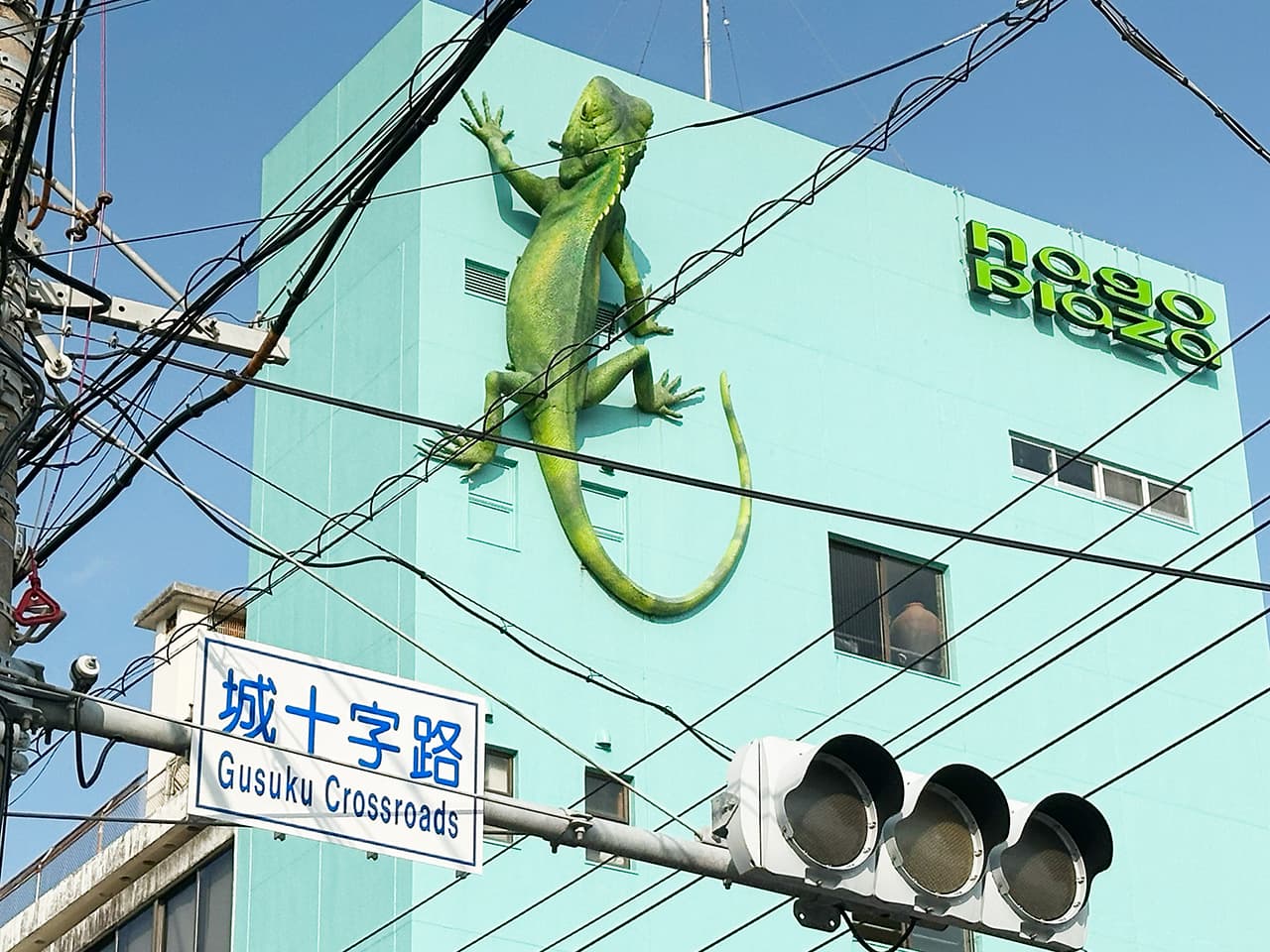Komon Bridge: over a century old rare gem
An old brick bridge, originally built as a floodgate, has been standing inconspicuously in Tokyo for over 100 years.
There are 6158 bridges in Tokyo, according to data from Ministry of Land, Infrastructure, Transport and Tourism.
But there is only one arch bridge made of bricks that still exists. This lone wolf silently sleeps on the Oba River at the western edge of the large Mizumoto Park in Katsushika Ward, literally a few steps away from the border with Saitama Prefecture.
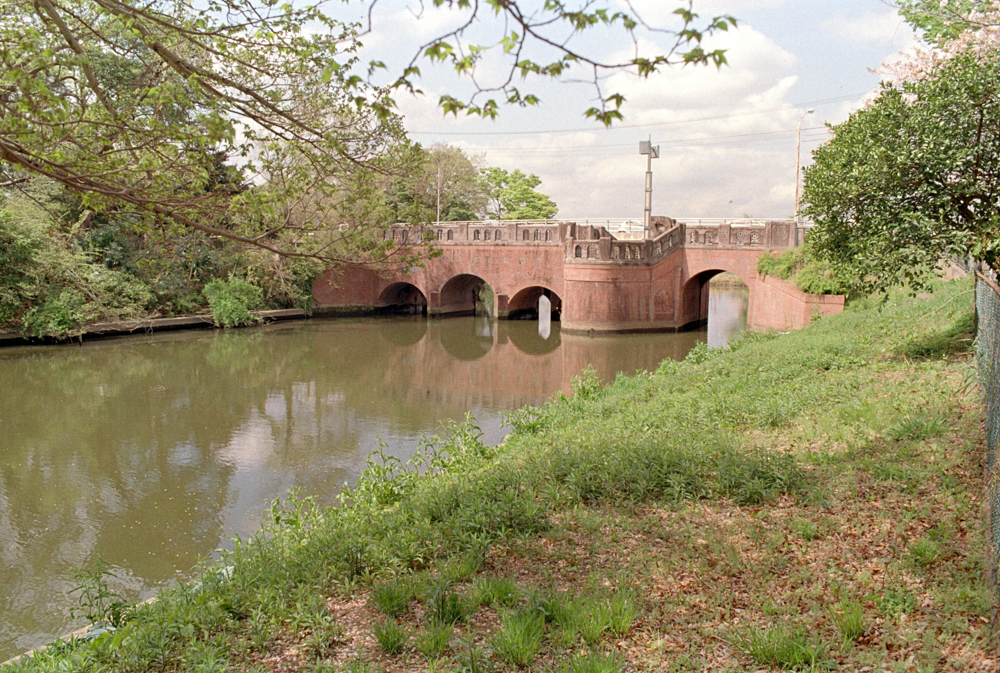
Called Komonbashi — or Komon Bridge — it was built in 1909 during the Meiji period with the primary purpose as a floodgate to regulate the flow of rivers Oba and Naka and prevent floods. A bridge for crossing was a secondary function. It is 30 meters long, 3 meters wide, and I’m sure you want to know how many bricks they used to build it — 160,000 red bricks, made in the town of Kanamachi in Katsushika Ward.
It was built over a century ago, but its origin dates back to the Edo period, when it was still made of wood. As such, it decayed quickly and was damaged every time a flood occurred. It had to be repaired frequently. The brick version that replaced it was the most advanced floodgate at the time.
Let’s step on the bridge.
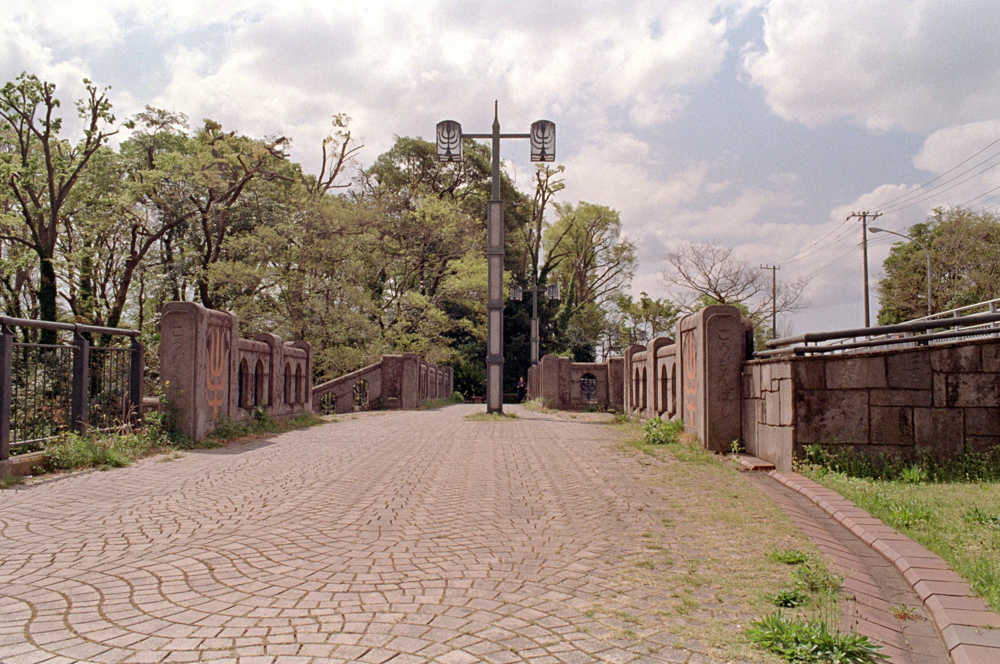
The road is nicely paved. But notice the strange symbol on the left and right side, and on the street lamps?
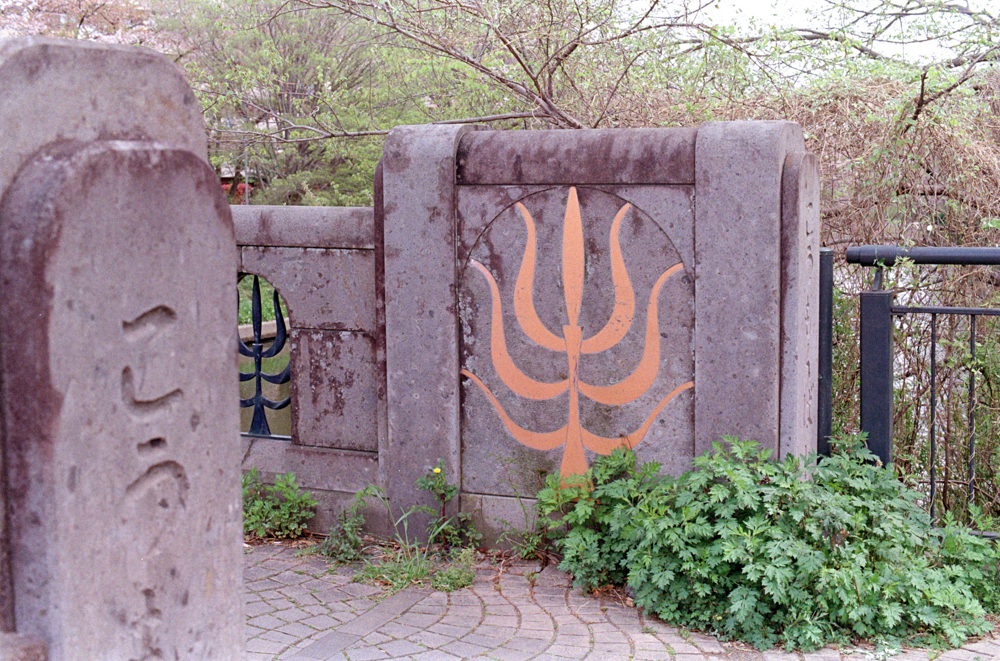
What could this be? A Jewish candlestick? Some sort of an occult symbol? Just an extraterrestrial pictograph? Honestly, I couldn’t find out. But wait, there is more. Just off the bridge, there is something that looks like a prehistoric stone table with seats around it. The engraving on it depicts a bird pointing to the North. The setting immediately reminded me on Stonehenge, albeit a miniature Japanese version of it.
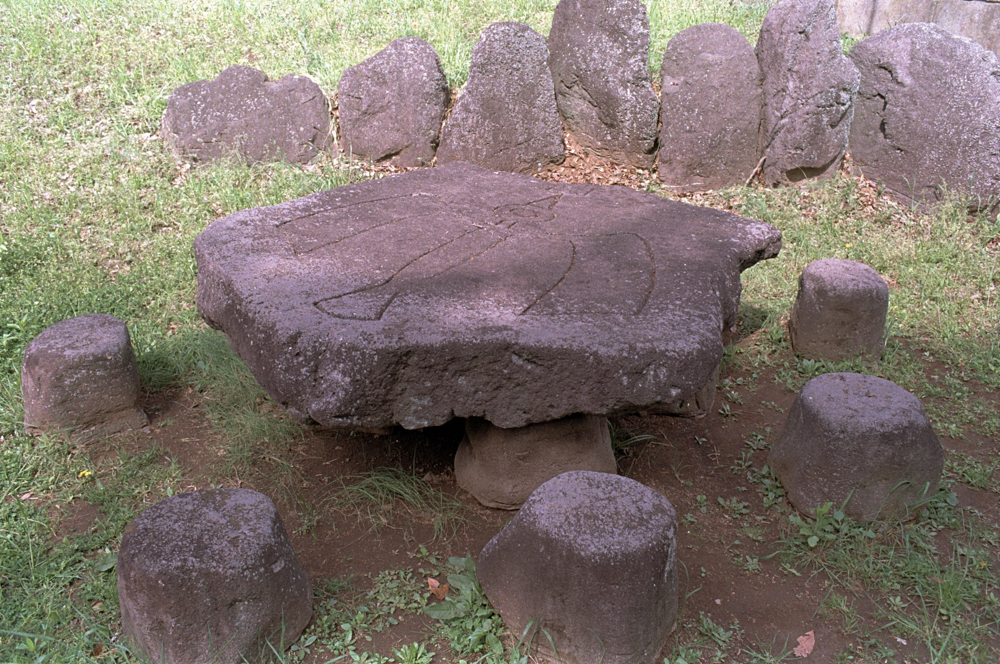
A few steps away from the table, there is a round brick bench decorated with a curious design. It shows a stylized kappa — an amphibious creature from Japanese mythology who lives in lakes, rivers and ponds. The kappa often attack humans, and they like cucumbers.
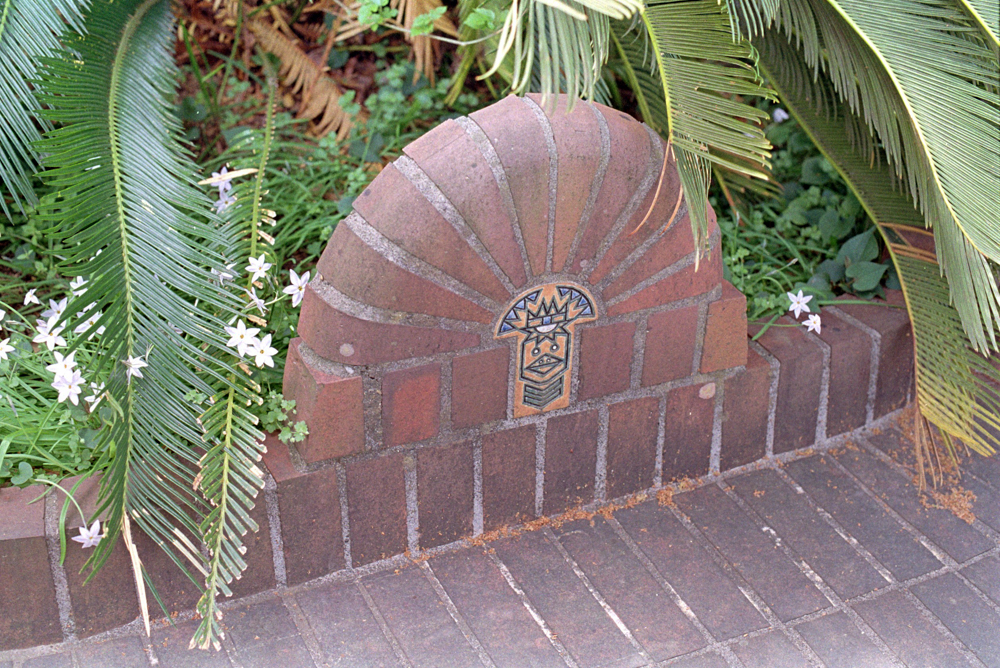
I’m not finished yet. Back on the bridge, there is a swirly sculpture standing on the overhang. Hello Picasso!
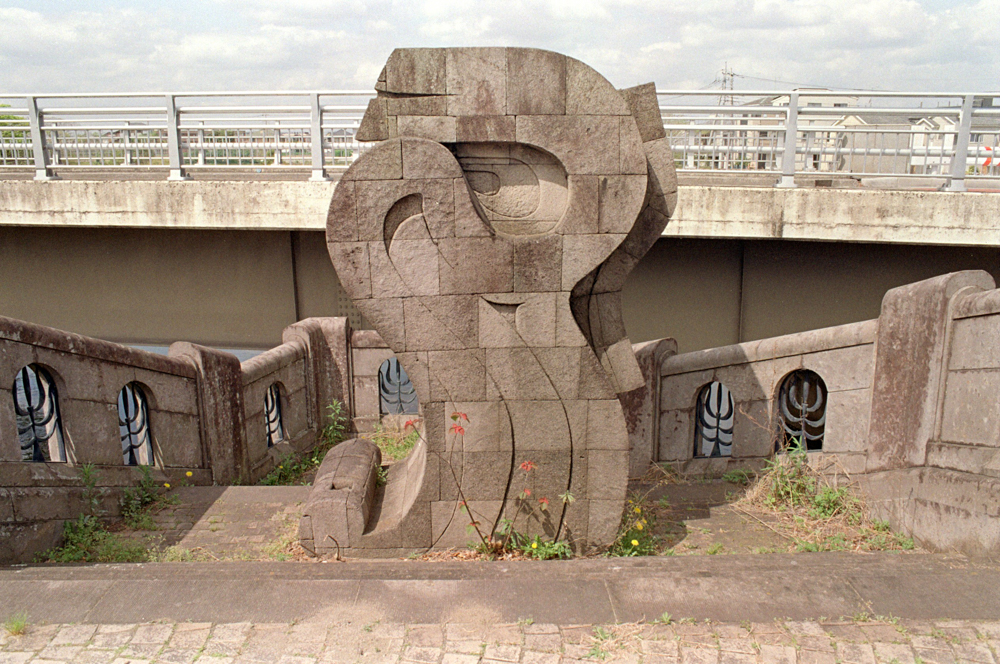
On a side note, behind the sculpture above you can see another bridge, a more modern road bridge that was built in 1970. Such a contrast! That’s Katsumibashi, used for cars only. Today, Komon Bridge is used exclusively for pedestrians and cyclists.
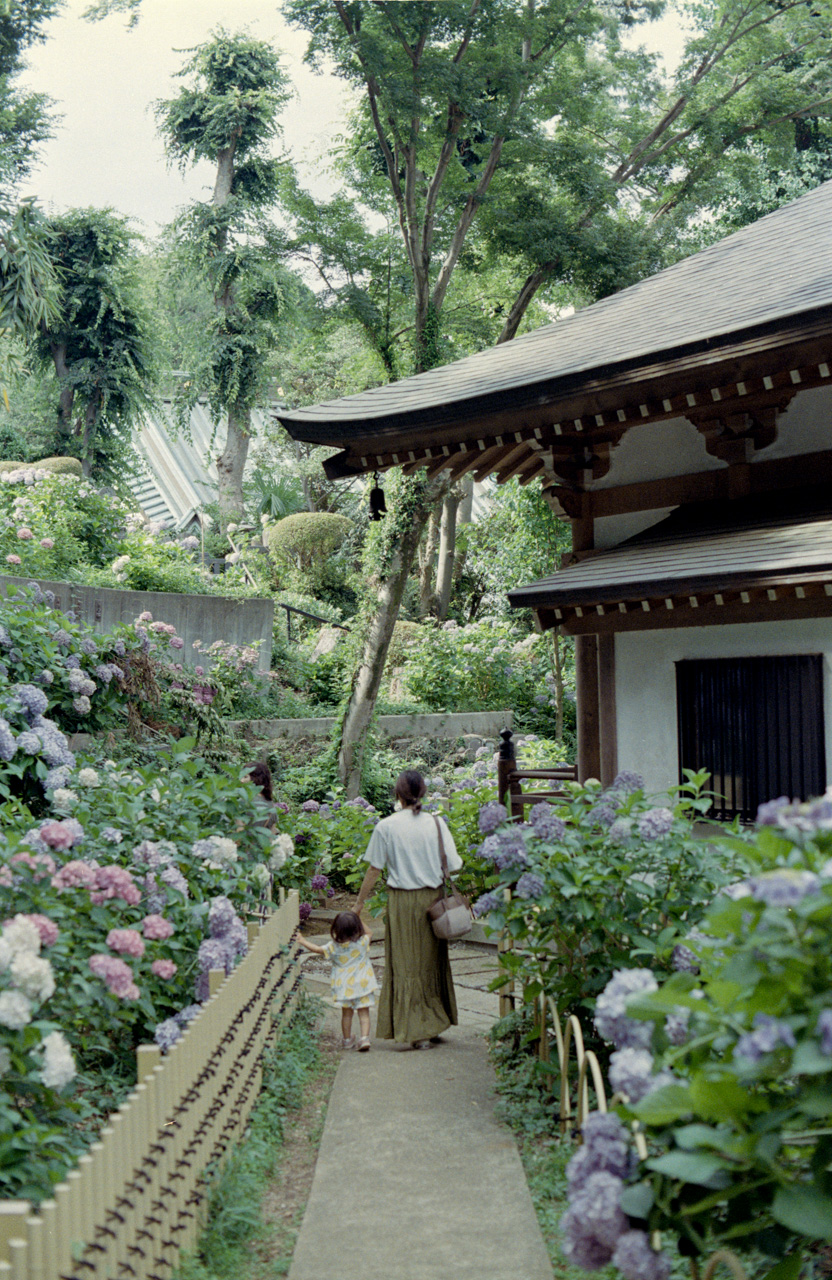
On the overhang opposite from the sculpture, there is a great view towards the greenery of Mizumoto Park. And the candlesticks are everywhere on the parapet, as you can see.
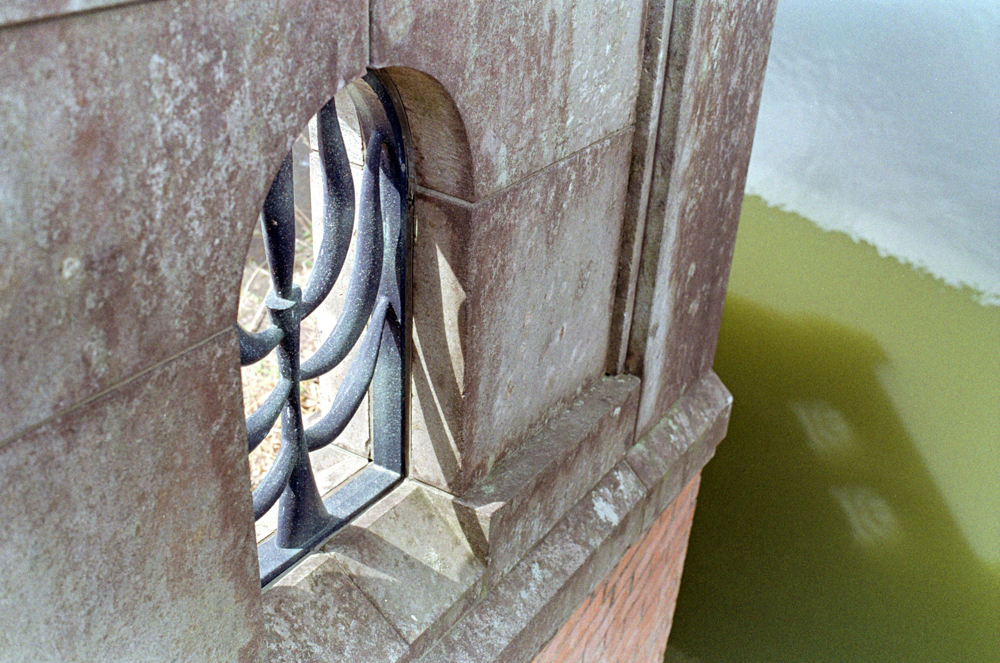
Okay, putting all this together: extraterrestrial candlestick + ancient bird pointing at North + Kappa + swirly Picasso portrait… The puzzle will be solved sometime in the next one hundred years! Maybe.
With all the cryptic symbols on the bridge, I almost forgot about another highlight. If you lean over the parapet on the side that’s facing the adjacent Katsumibashi, you will notice two bronze statues standing above the middle arch. Very hidden, and not easy to see from the bridge itself if you’re just casually passing over.
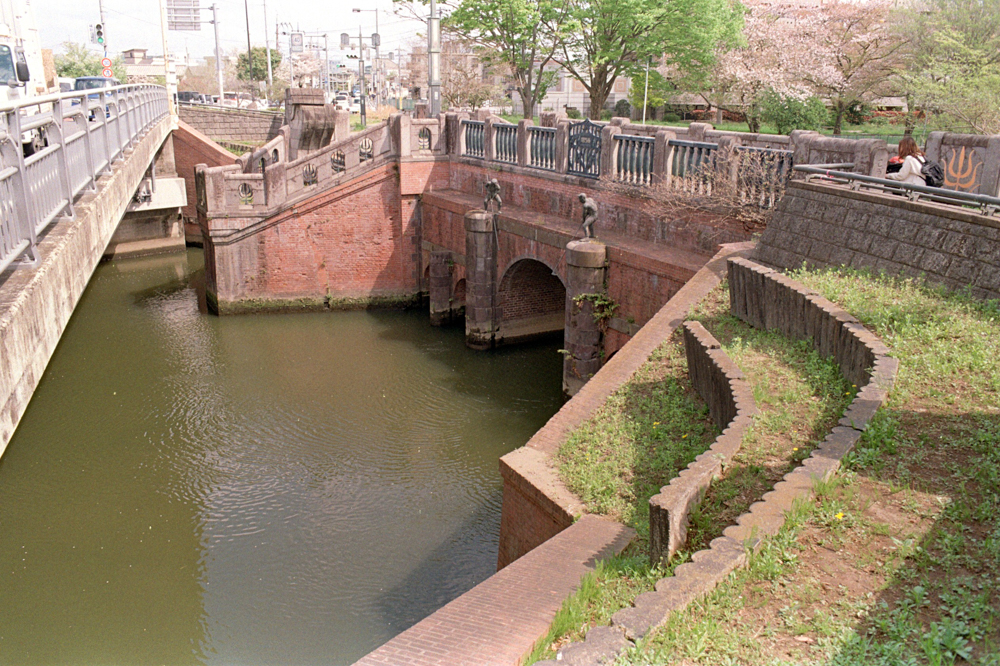
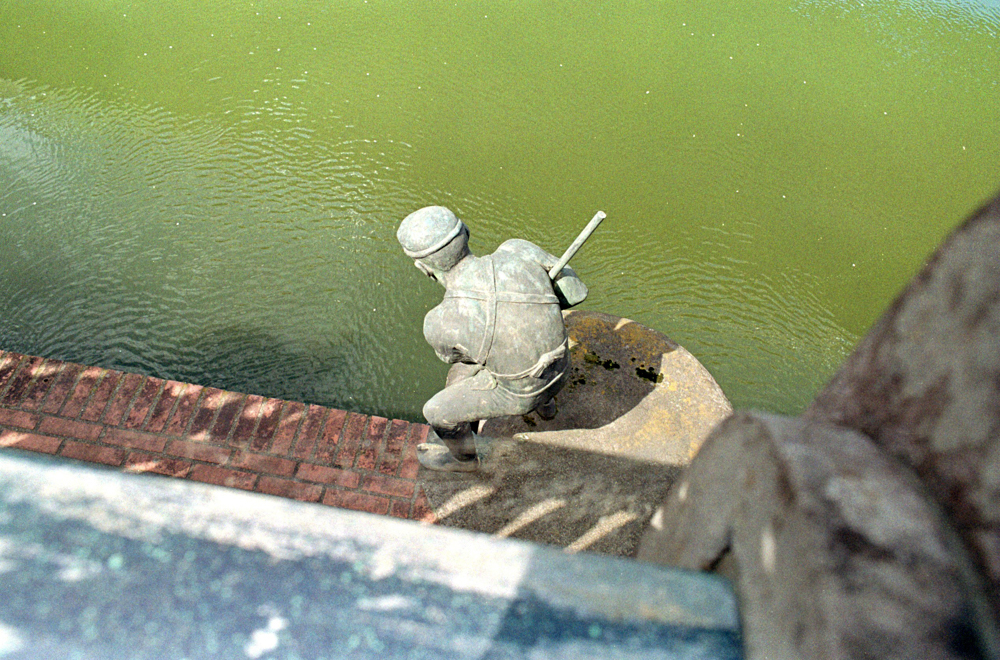
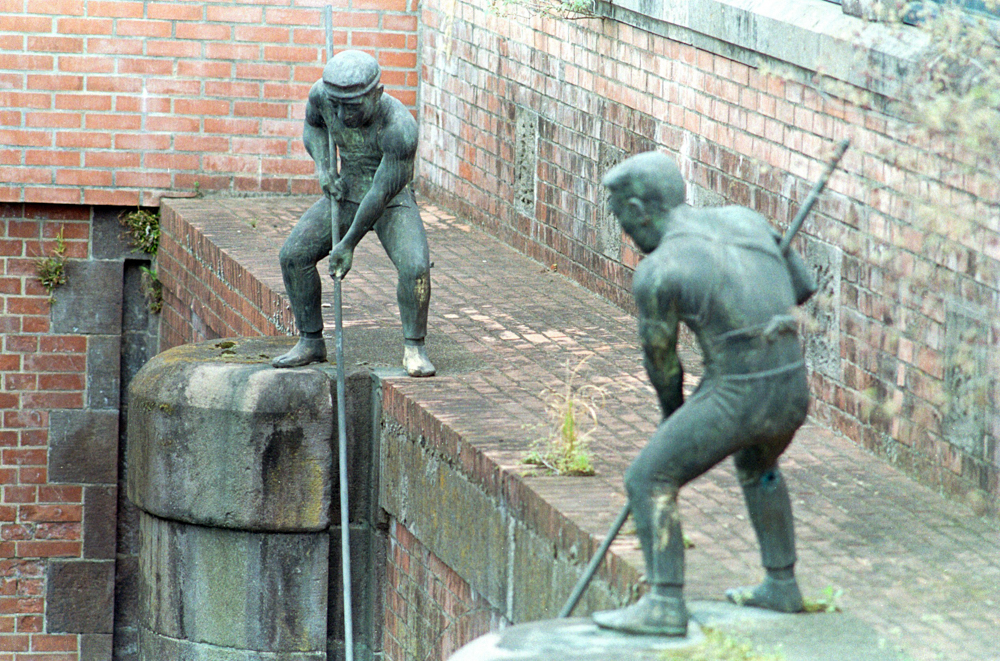
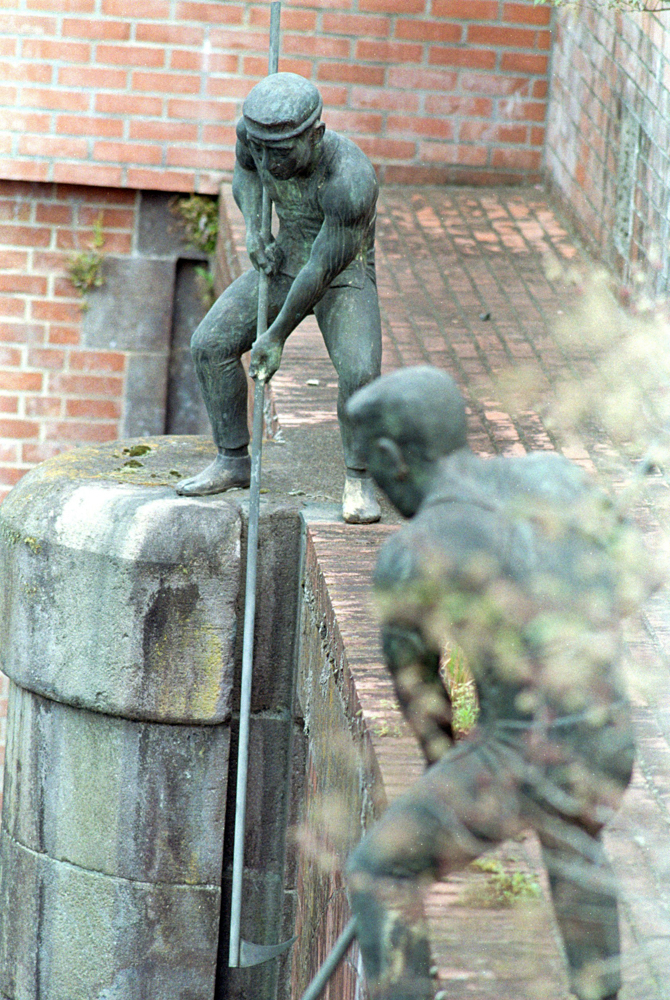
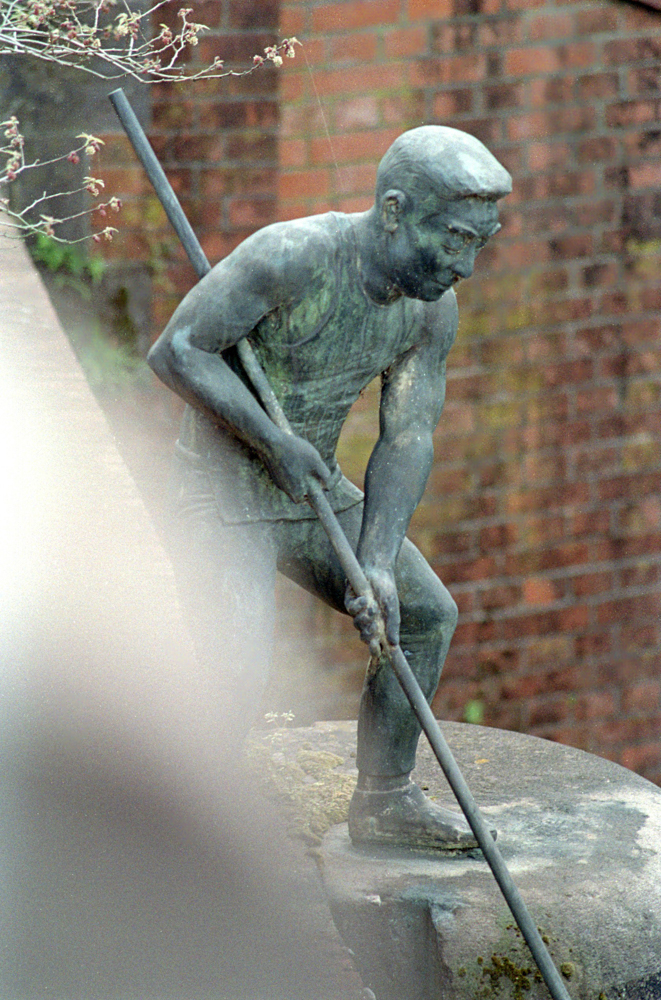
The statues (which were added at a later time), represent two men inserting stoplogs to prevent the inflow of flood while fighting against wind and rain.
Komon Bridge was certified as Modern Civil Engineering Heritage of Japan and evaluated as rank “A” (equivalent to Important Cultural Property).
I don’t think there are many bridges — especially not modern ones — where you can find so much variety in such a small area. Along with historical significance, I could say that this bridge has a personality. As such, it’s a rare gem, and let’s hope it will continue standing over this river for a long time to come.
